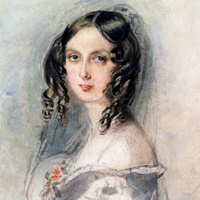 Ada Lovelace
Ada Lovelace
Enchantress of numbers, the world's first computer programmer
Related: AI History | AI Research | Biographies
Ada Lovelace (1815-1852) was a pioneering mathematician and writer, regarded as the world's first computer programmer
Born in London as Augusta Ada Byron on 10 December 1815, she was the only legitimate child of the famous poet Lord Byron and his wife, Anne Isabella Milbanke. Ada's upbringing, marked by her mother's emphasis on mathematics and logic, set the foundation for her groundbreaking contributions to the field of computing.
She is best known for her work on Charles Babbage's Analytical Engine, a proposed mechanical general-purpose computer. She envisioned its potential to perform complex calculations and manipulate symbols, laying the groundwork for modern programming and algorithmic composition. Her insights into the Analytical Engine were remarkable for her time. She recognized that it could do more than mere arithmetic calculations. She suggested that it could process intricate mathematical ideas and even create music. Her famous analogy comparing the engine's function to the Jacquard loom underscored her understanding of the interplay between mathematics and the arts.
Despite facing significant challenges as a woman in a male-dominated field, her ideas were both innovative and prescient, anticipating the capabilities of modern computers and influencing future generations of scientists and engineers. Though largely unrecognized during her lifetime, Ada's legacy has grown significantly, and like Grace Hopper, has inspired movements for greater female representation in STEM (Science, Technology, Engineering, and Mathematics) fields. Ada Lovelace Day, celebrated annually, honors her contributions while advocating for women's achievements in science and technology. Additionally, her story is frequently utilized in education to inspire young women to pursue careers in STEM. Her enduring influence is also reflected in cultural depictions, from literature to documentaries, which highlight her role as a trailblazer in computing as well as a symbol of women's potential in science.
Ada's contributions to computing have been formally recognized through various awards and honors, including the naming of the ADA programming language after her and the establishment of the Lovelace Medal by the British Computer Society. Today, she stands as a testament to the integration of creativity and analytical thinking.
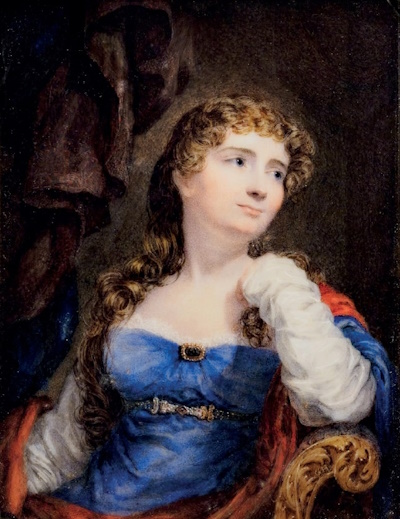
Lady Byron
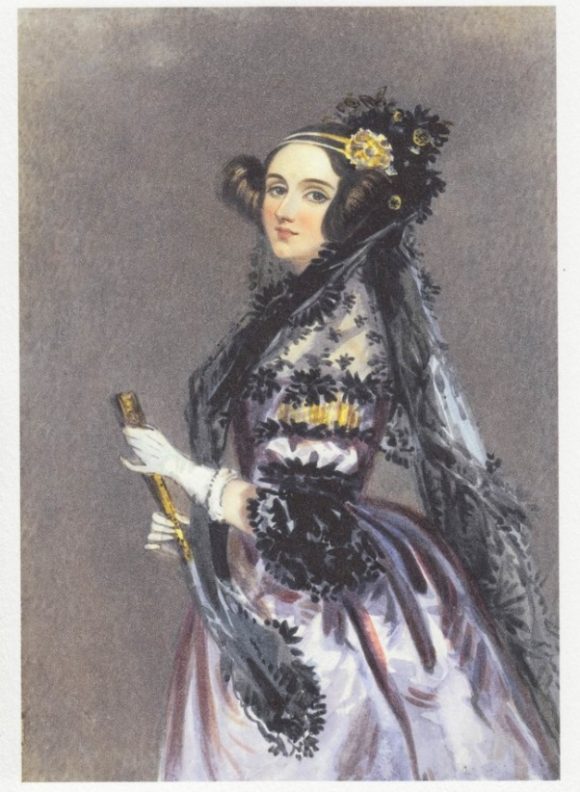
Ada Lovelace
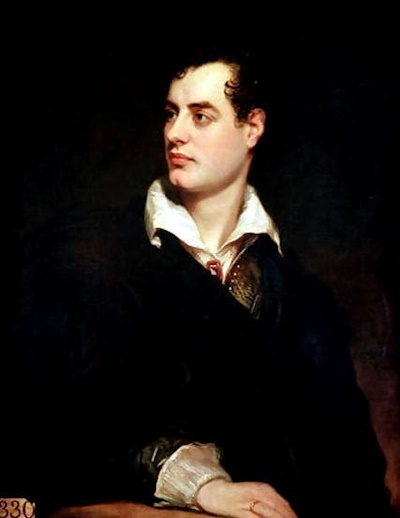
Lord Byron
 Early Life
Early Life
Ada Lovelace, born as Augusta Ada Byron, was the only legitimate child of the renowned poet Lord Byron and his wife, Anne Isabella Milbanke, Lady Byron, the 11th Baroness Wentworth
Ada's father abandoned the family shortly after her birth, leaving her mother to raise her alone. Lord Byron passed away when Ada was just eight years old, and she never had the opportunity to know him.
Lady Byron, the Right Honourable Baroness Wentworth, was concerned about the potential influence of her husband's volatile nature on their daughter and sought to provide Ada with an education that emphasized mathematics and logic as a means to counteract any inherited traits from her father. This was an unusual approach for the time, as many women received only a basic education. Ada's studies were comprehensive and included mentorship from prominent intellectuals such as mathematician Mary Somerville and logician Augustus De Morgan.
Despite facing various health challenges during her childhood, which sometimes left her bedridden, Ada utilized this time to deepen her understanding of mathematics and logic. By the age of 17, her exceptional intellect began to attract the attention of some of the leading scientists of her time, which further cultivated her analytical abilities and expanding her vision of the potential applications of technology. She was 17 when she met Charles Babbage.
Ada's formative years were characterized by an environment rich in intellectual stimulation, which played a crucial role in shaping her into a pioneering thinker. This foundation ultimately set the stage for her groundbreaking collaboration with Charles Babbage and her historic contributions to the field of computing.
 The Analytical Engine
The Analytical Engine
Ada Lovelace is often celebrated as the world's first computer programmer due to her pioneering work on Charles Babbage's Analytical Engine, a 19th Century mechanical general-purpose computer
In her studies, she envisioned how the Analytical Engine could not only perform calculations but also manipulate symbols in a way that could eventually lead to computing, predicting the emergence of future computational capabilities that we now take for granted in modern software applications. Ada famously noted that the Analytical Engine "weaves algebraic patterns just as the Jacquard loom weaves flowers and leaves."
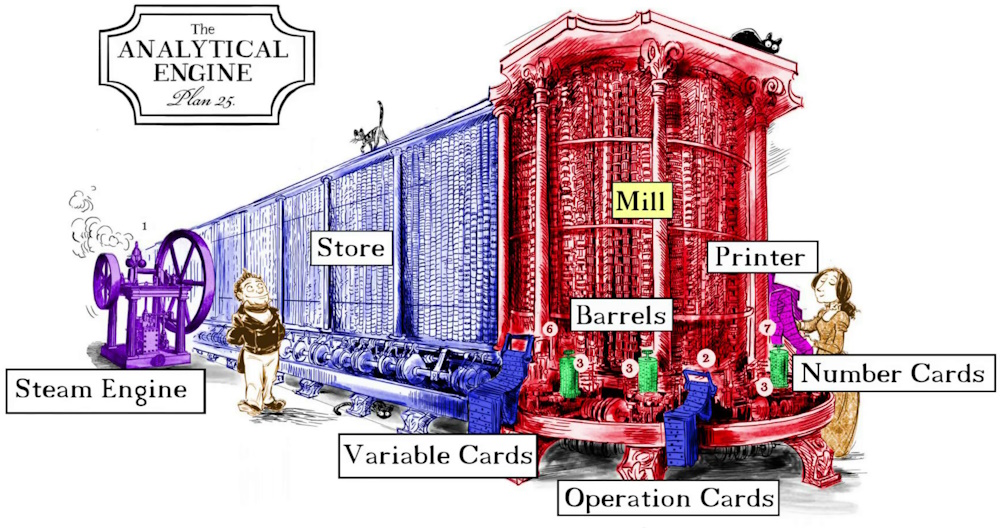
The Analytical Engine incorporated an arithmetic logic unit, control flow in the form of conditional branching and loops and an integrated memory, making it the first design for a general-purpose computer. The structure of the analytical engine was essentially the same as that which has dominated computer design in the electronic era.
The input, consisting of programs ("formulae") and data, was to be provided to the machine via punched cards, a method being used at the time to direct mechanical looms like the Jacquard loom. For output, the machine would have a printer, a curve plotter, and a bell. The machine would be able to punch numbers onto cards to be read in later. It employed ordinary base-10 fixed-point arithmetic. There was to be a store ("memory") capable of holding 1,000 numbers of 40 decimal digits each. An arithmetic unit (the "mill") would be able to perform all four arithmetic operations, plus comparisons and square roots. Like the CPU in a modern computer, the mill would rely upon its own internal procedures, roughly equivalent to microcode in modern CPUs, to be stored in the form of pegs inserted into rotating drums ("barrels"), to carry out some of the more complex instructions the user's program might specify. The programming language to be employed by users was similar to modern day assembly language with loops and conditional branching.
 Translation of Babbage's Lectures
Translation of Babbage's Lectures
The idea of a machine that could manipulate symbols according to rules marked the important transition from calculation to computation
In 1842, the Italian mathematician Luigi Federico Menabrea published a description of the Analytical Engine in French, based on lectures Babbage gave when he visited Turin. Not only did Ada translate the original French text to English, but she also provided her own input, ultimately writing that the machine could be programmed to follow a list of instructions. She hypothesized this programming could work with other things besides numbers.
In recognition of her additions to Menabrea's paper, which included a way to calculate Bernoulli numbers using the machine, her work is considered to be the first complete computer program. Thus, Ada has been described by many as the "first computer programmer". Unfortunately, Babbage's engine was never buiilt, so Ada's programs were never executed.
The Lovelace translation from the French to English added many original thoughts, some articulated with Babbage's assistance. Here is Stephen Wolfram's description of the work process:
Over the months that followed she worked very hard,
often exchanging letters almost daily with Babbage (despite sometimes having
other "pressing and unavoidable engagements"). And though in those days
letters were sent by post (which did come 6 times a day in London at the
time) or carried by a servant (Ada lived about a mile from Babbage when she
was in London), they read a lot like emails about a project might today,
apart from being in Victorian English. Ada asks Babbage questions; he
responds; she figures things out; he comments on them. She was clearly in
charge, but felt she was first and foremost explaining Babbage's work, so
wanted to check things with him, though she got annoyed when Babbage, for
example, tried to make his own corrections to her manuscript.
It's
charming to read Ada's letter as she works on debugging her computation of
Bernoulli numbers: "My Dear Babbage. I am in much dismay at having got into
so amazing a quagmire & botheration with these Numbers, that I cannot
possibly get the thing done today. ...I am now going out on horseback. Tant
mieux." Later she told Babbage: "I have worked incessantly, & most
successfully, all day. You will admire the Table & Diagram extremely. They
have been made out with extreme care, & all the indices most minutely &
scrupulously attended to." Then she added that William (or "Lord L." as she
referred to him) "is at this moment kindly inking it all over for me. I had
to do it in pencil..."
Based on these conversations, in a subsequent, lengthly letter, Ada proposed to Babbage that he allow her to essentially manage the development of the Analytical Engine. Due to Babbage's incalcitrance and Ada's poor health, the Analytical Engine never saw the light of day.
One can only wonder what would have happened had Babbage allowed a healthy Ada to be his project manager. Perhaps the world's first mechanical, general purpose computer would have been built. Perhaps they would have soon realized that in Version 2.0 they should replace some of the mechanical parts with relays and wires, thus resembling the first large-scale computers of modern times...only a century earlier!
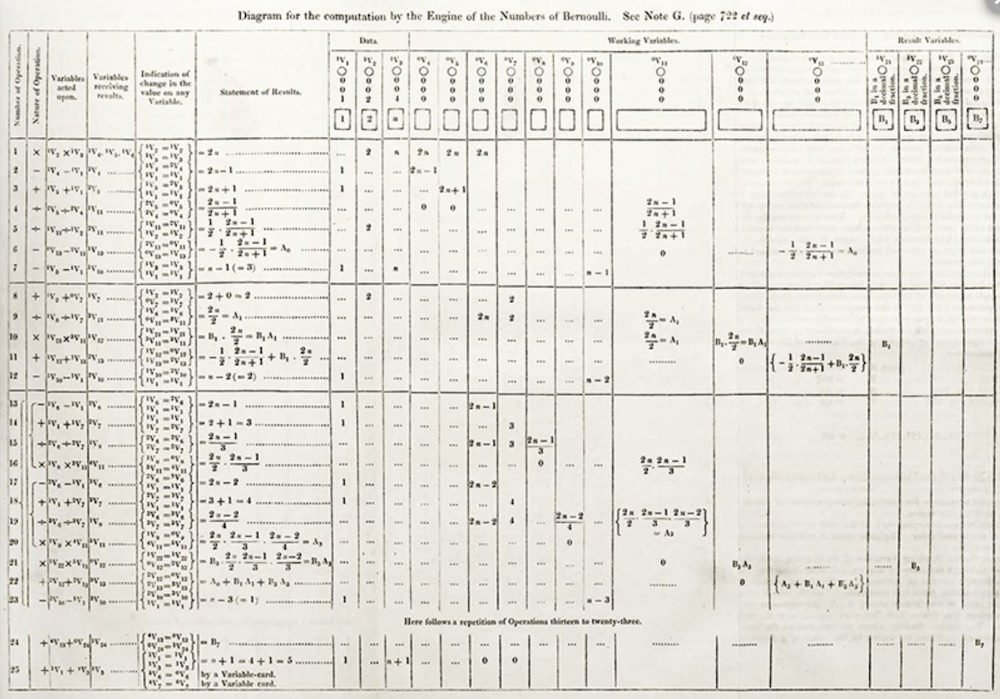
Ada's execution trace of a program that runs for 25 steps (plus one loop) on the Analytical Engine
 Legacy
Legacy
Ada Lovelace's legacy is profound, impacting both the field of computing and gender equality in science and technology. Lovelace's insights into programming and computation were remarkably prescient, as she understood the complexities involved in programming and the necessity for precision in calculations.
Despite the groundbreaking nature of her work, Ada's contributions were largely unrecognized during her lifetime. Ada's work exemplified the integration of mathematics, science, and the arts, a combination that has become increasingly relevant in contemporary discussions about interdisciplinary approaches to problem-solving and innovation. Throughout her career, Ada was not only a mathematician, but also a significant figure in the historical narrative of computing, advocating for the potential of machines to extend human creativity and understanding in ways that were previously unimaginable.
Lady Lovelace's Objection
This refers to Ada Lovelace's assertion that the Analytical Engine could not create anything original on its own. In her writings, particularly in her Translator's Note G, she expressed the belief that while machines could follow instructions and perform calculations, they lacked the ability to originate ideas or anticipate new relationships. She famously stated: "The Analytical Engine has no pretensions whatever to originate anything. It can do whatever we know how to order it to perform."
Ada's objection has had a profound influence on discussions surrounding AI and machine learning. It raises critical questions about the nature of creativity and originality in machines. Her statement highlights the distinction between human cognition and machine processing, suggesting that machines can only operate within the confines of human knowledge. In response, Alan Turing referenced Ada's objection in his work on machine intelligence. He challenged her view by proposing that machines could be programmed to produce outputs that appear original or creative, thereby engaging in what he termed "thinking." This debate laid the groundwork for ongoing discussions about AI's capabilities and limitations.
Educational Influence
Ada's story is frequently cited in education to inspire young women to pursue careers in STEM fields. Ada Lovelace Day, celebrated annually on October 7, serves to honor her contributions and encourage women and girls to engage in science and technology. Schools and universities worldwide use her legacy as a case study in challenging traditional gender norms, illustrating how women can significantly contribute to these fields. The increased visibility of women in computing, along with organizations dedicated to their advancement, reflects the impact of her groundbreaking work.
Cultural Impact
Beyond education, Lovelace's influence has permeated popular culture, being featured in literature, film, and various media that celebrate her pioneering role. These portrayals contribute to a broader understanding of her impact and help to ensure that her contributions remain relevant in contemporary discussions about technology and gender.
Awards and Recognitions
Numerous awards and honors have been established in recognition of Lovelace's contributions. The programming language ADA, named after her, and the Lovelace Medal awarded by the British Computer Society, are testaments to her enduring influence in computing. Additionally, scholarships in her name are offered at various institutions to support aspiring students in computer science and mathematics. In 2012, Ada Lovelace was inducted into the Internet Hall of Fame.
Ada was celebrated worldwide on 10 December 2015, on the occasion of her 200th birthday, with workshops, meetings, and publications. In particular, ACM Books published an interdisciplinary collection of papers inspired by Ada's life, work, and legacy. The book covers Ada's collaboration with Babbage, her position in Victorian and Steampunk literary genres, her representation in contemporary art and comics, and her increasing relevance in promoting women in science and technology.
Her Short Life
In 1835, Ada married William King, who became the Earl of Lovelace, making Ada the Countess of Lovelace. They shared a love of horses, and had three children together. They socialized with famous people of the time, including Michael Faraday and Charles Dickens, who read her passages from his books as she lay dying. As in her childhood, Ada continued to fall ill. She took months to recover after the birth of her second child and suffered rheumatic attacks.
Ada Lovelace died from uterine cancer on 27 November 1852, and was buried next to her father's grave. She was only 36 years old, the same age as her father, Lord Byron, when he died. Florence Nightingale, nursing pioneer and Ada's friend, wrote of her death, "They said she could not possibly have lived so long, were it not for the tremendous vitality of the brain, that would not die."
 Links
Links
lemelson.mit.edu/resources/ada-lovelace
kids.nationalgeographic.com/history/article/ada-lovelace
writings.stephenwolfram.com/2015/12/untangling-the-tale-of-ada-lovelace
britannica.com/biography/Ada-Lovelace
fivebooks.com/best-books/ada-lovelace-ursula-martin
mpg.de/female-pioneers-of-science/Ada-Lovelace
sciencemuseum.org.uk/objects-and-stories/lovelace-turing-and-invention-computers
blogs.bodleian.ox.ac.uk/adalovelace/2018/07/26/ada-lovelace-and-the-analytical-engine
fourmilab.ch/babbage/sketch.html
sciencemuseum.org.uk/objects-and-stories/charles-babbages-difference-engines-and-science-museum